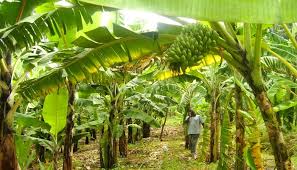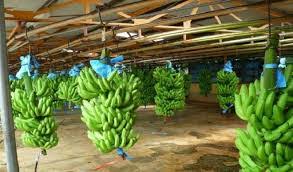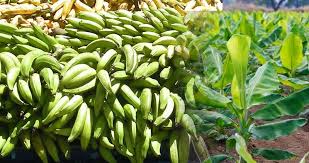Plantain, otherwise called “cooking bananas” are starchy fruits with a relatively neutral flavor and has a soft texture when cooked. They produce fruit all year round and this makes them a staple food for most families. The possibilities of making it big in plantain farming business are much.
It is no longer a secret that agriculture is a money maker. Agriculture is the cultivation of the soil for the growing of crops and the rearing of animals to provide food, wool, and other products. We all are conversant with this definition, but only a few understand the implication of this.
Food is a necessity for man, while we wake up with the troubles of the day, the craving for food cannot be killed. Which better way is there to provide food if not farming?
As an entrepreneur, you should see it as the most common crop in the country, this spot is shared with cassava. Plantains develop in clusters, while each mature sucker brings forth another sucker, making for easy propagation.
Plantain farming business is that agri-business that anybody can try their hands on and smile home with cash. Plantain starts producing fruits from 7-9 months after planting, so you can be assured that if you do it right, your first yield will be enough to cover initial expenses.
Read Also: The Importance of Plantain Farming Business
Meanwhile, before achieving all these in plantain farming business, there are some factors that must be considered when selecting a site for your plantain farming business which are as follows:
(1) The site should be easily accessible, especially if the establishment of a large field is being planned.
(2) It should be well drained but not too steeply sloped because Plantain cultivation is impossible if the land becomes flooded from time to time, or has a water table at a depth of only 50 cm or less.
(3) The soil should be rich in organic matter (black soil). Hence fields in a long natural fallow, under an improved established fallow or with a lot of mulch are recommended.
How To Start Plantain Farming Business

(1) Land Preparation
You need a piece of land to plant on. Else, you are from the year 3030 when plants will be grown on thin air (Lol). While selecting land for this crop, do bear this in mind
Plantains love rich loam soil, avoiding steep slopes and places with a bad water drainage system. In all, if the soil is rich in loam content, not marshy but moderate in holding just the right amount of water, that’s the land you need.
Loamy soils are the best producing soils for plantain farming because they contain a large percentage of organic components, compared to the inorganic parts.
Organic materials, such as decaying plants and insects, provide soil with air, nutrients and water-retaining matter. This combination of ingredients, when combined with mineral particles, allows soil to remain loose and fertile.
The soil must contain a good organic to inorganic ratio with organic materials like decaying plants and animals. Prepare the land by clearing the land off bushes, stones, trees and stumps.
A soil’s fertility can be improved by adding chicken manure, compost, wood ash (for extra potassium) and mulching. The chicken manure will not only increase the soil fertility, it will increase its water-retaining capacity.
Note that plantains do well when they are protected from the sun, so it is better to plant them in clusters where they can protect each other from the sun or leave some of the trees to protect them from excessive sunlight and maintain humidity.
While preparing the land, please avoid compaction of earth, employ manual labor as opposed to mechanical work. Do using organic manure is very welcome.
Read Also: Introduction to Plantains and their Environment
(2) Planting Range / Intervals
According to Research and Experience, the recommended spacing is 3 m between the plantain rows and 2 m within the row (in other words. 3 m x 2 m). An alternative is 2.5 m x 2.5 m. If spaced 3 m x 2 m, 1 hectare should contain 1667 plants, but with a spacing of 2.5 m x 2.5 m, it should contain 1600 plants.
This arrangement makes for good spacing, adequate sunlight and air circulation. Also, note that if your land is on a slope, the arrangement should be done in a way that ensures little erosion. This can be done by following the contour lines.
Planting should be done with about “30–60 cm (11.8 in –23.6 in)” deep in the soil.
(3) Plantain Sucker Selection
A good breed of the plantain fruit will better your chances at making the best of it. While choosing your suckers, it is advised to choose from vigorous plants, they should have small spear-shaped leaves and are about 4ft high.
Plantain Suckers are shoots which develop from the bud of the mother plantain plant. They should have small, spear-shaped leaves and are about four feet high.
Make sure you approach reputable farmers that can supply you with healthy plantain suckers that are free of diseases. The suckers should be planted two to five meters away from each other.
Note that there are 3 types of plantain suckers. They are peeper sucker, maiden sucker, and sword sucker.
- Peeper sucker; is a small sucker emerging from the soil;
- Maiden sucker; is a large sucker with foliage leaves. It is a good planting material as it grows strong, produces great yields and is resistant against pests and diseases.
- Sword sucker is a large sucker with lanceolate l It is the best conventional planting material. It grows strong and produces great yields and is resistant against pests and diseases.
(4) Planting Seasons and Conditions
Plantains develop best during the rainy season, although they produce all year round, do not plant towards the end of the rainy season.

The best period to plant is the beginning of the rainy season, these periods give it about 4-5 months of constant water while ensuring you reap the fruits in the 7th/8th month. Extreme weather conditions can damage your crops.
Read Also: Weed Management on Plantain Cultivation
(5) Fertilizing, Mulching, Weeding and Pest Control
Sufficient manure is necessary for proper development. The combined use of Organic and Inorganic manure gives the best result. A month after planting is enough time to add additional nutrients to the plantation.
Weeding is important as weeds compete with the plantains for the soil nutrient. Manual labour can be employed or chemicals like Herbicides can be used to control weeds.
Also, if you are to apply fertilizers, make sure they have a good dose of potassium, phosphorus and nitrogen (PNK). The fertilizers should be placed in a circle four to eight feet from the trunk and should be applied once a month to stimulate growth.
Mulching should be done around the base of the plant to help the plant conserve nutrients and reduce erosion at the base of the plant.
Weeding should be done regularly so that plants don’t compete for nutrients. Schedule for weeding in about 6-8 weeks.
The known pest for Banana and Plantain are bats, monkeys and humans. You should find ways to ensure that plants are adequately protected.
(6) Harvesting
The moment we all have been waiting for. In 8-10 months, the plantain fruit will be ready for harvesting. Plantains will always produce more fruits until the harvest season is over.
Once you see your fruits, harvesting should come in 3 months. Fruits normally appear within 90 to 120 days after the tree flowers. Upon fruiting, plantains are typically ready for harvest within 6 to 8 months.


We, at ALDMAG AGRO GROUP INCORPORATED are involved Into Organic Cocoa Bean Farming, and we also considering adding Plantain and Corn or (Maize) farming to our Community Farmers Cooperatives.
That’s great and a very nice idea!